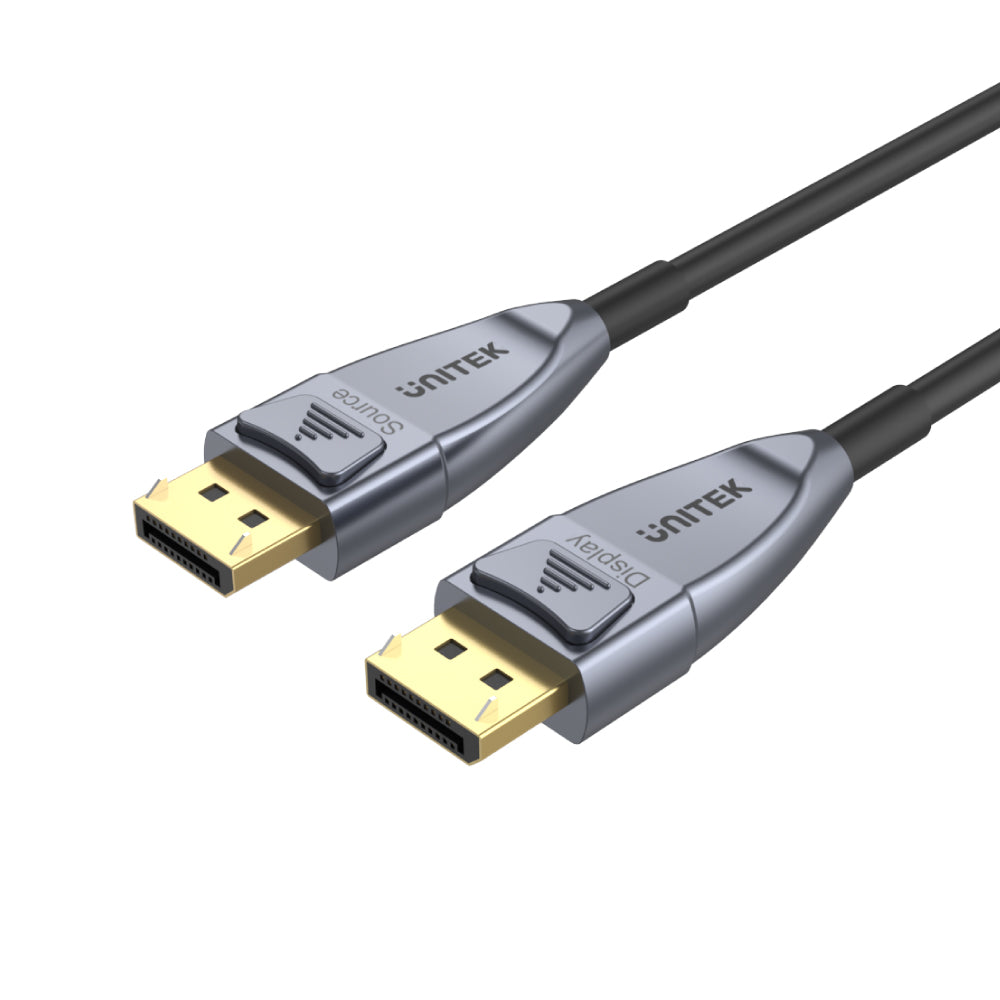






8K 광섬유 DisplayPort 1.4 케이블(8K @60Hz, 4K 144Hz, 1440p @240Hz)
Transform your entertainment and gaming experiences with the UNITEK DP 1.4 Active Optical Cable, designed for unparalleled 8K resolution and ultra-fast refresh rates. This advanced cable solution guarantees lossless transmission, making it ideal for high-definition content, gaming, and immersive displays.

8K@60Hz, 4K@144Hz, Long-Distance Lossless Transmission
Experience flawless ultra-high-definition visuals with the Unitek UltraPro DisplayPort 1.4 Active Optical Cable. Engineered for 8K@60Hz, 4K@144Hz, and 1440p@240Hz, this cable delivers lossless signal transmission over long distances thanks to its 32.4Gbps bandwidth and 4-core optical fiber technology. The durable PVC jacket, PE insulation, and bare copper conductor ensure reliability, while aluminum foil shielding protects against interference. Perfect for gaming, professional AV setups, and data centers requiring uncompromising performance.

Elevate Your Gaming with UltraPro DisplayPort 1.4 Cable
Experience unparalleled visual clarity and smoothness with the UltraPro DisplayPort 1.4 Active Optical Cable. Enjoy ultra-fast and crisp motions with UHD resolution, supporting 8K at 60Hz, 4K at 144Hz, and 1440p at 240Hz. This cable enhances your immersive experience with a higher refresh rate, even at lower resolutions, delivering 144 frames per second for seamless gameplay compared to the standard 30 frames per second.

8K HDR, 32-Channel Audio & DSC 1.2 for Immersive Sensory Excellence
Elevate your audiovisual experience with the Unitek UltraPro DisplayPort 1.4 Cable, designed for ultra-sensory enjoyment. Featuring HDR for vibrant contrast, 32-channel authentic audio for theater-quality sound, and Forward Error Correction (FEC) for flawless data transmission. With Display Stream Compression (DSC) 1.2, it delivers stunning 8K@60Hz or 4K@144Hz visuals without compromise. Ideal for high-end gaming, professional studios, and home theaters demanding pristine fidelity and zero lag.

Durable Zinc-Alloy & Gold-Plated Design for Secure, Long-Lasting Connections
The UNITEK UltraPro DisplayPort 1.4 Cable combines rugged reliability with user-friendly design. Its corrosion-resistant gold-plated connectors ensure optimal signal transmission, while the strong zinc-alloy housing provides superior durability. The thoughtful easy-grip latch offers a secure, frustration-free connection – perfect for frequent plugging/unplugging in gaming, AV production, or professional setups. Built to last through years of high-performance use without signal degradation.
| Max Output Resolution | 8K@60Hz |
|---|---|
| DisplayPort | 2 |
| Data transfer rate | 32.4Gbps |
| Cable Length | 500만 |
| Cable Type | DisplayPort 대 DisplayPort |
| Cable OD | 4.8mm |
| Material | Alloy Housing, Gold-Plated |
| Colour | Space Grey |
- 1 x Ultrapro DisplayPort1.4 액티브 광 케이블
- 1 x 사용자 설명서
Choose options
